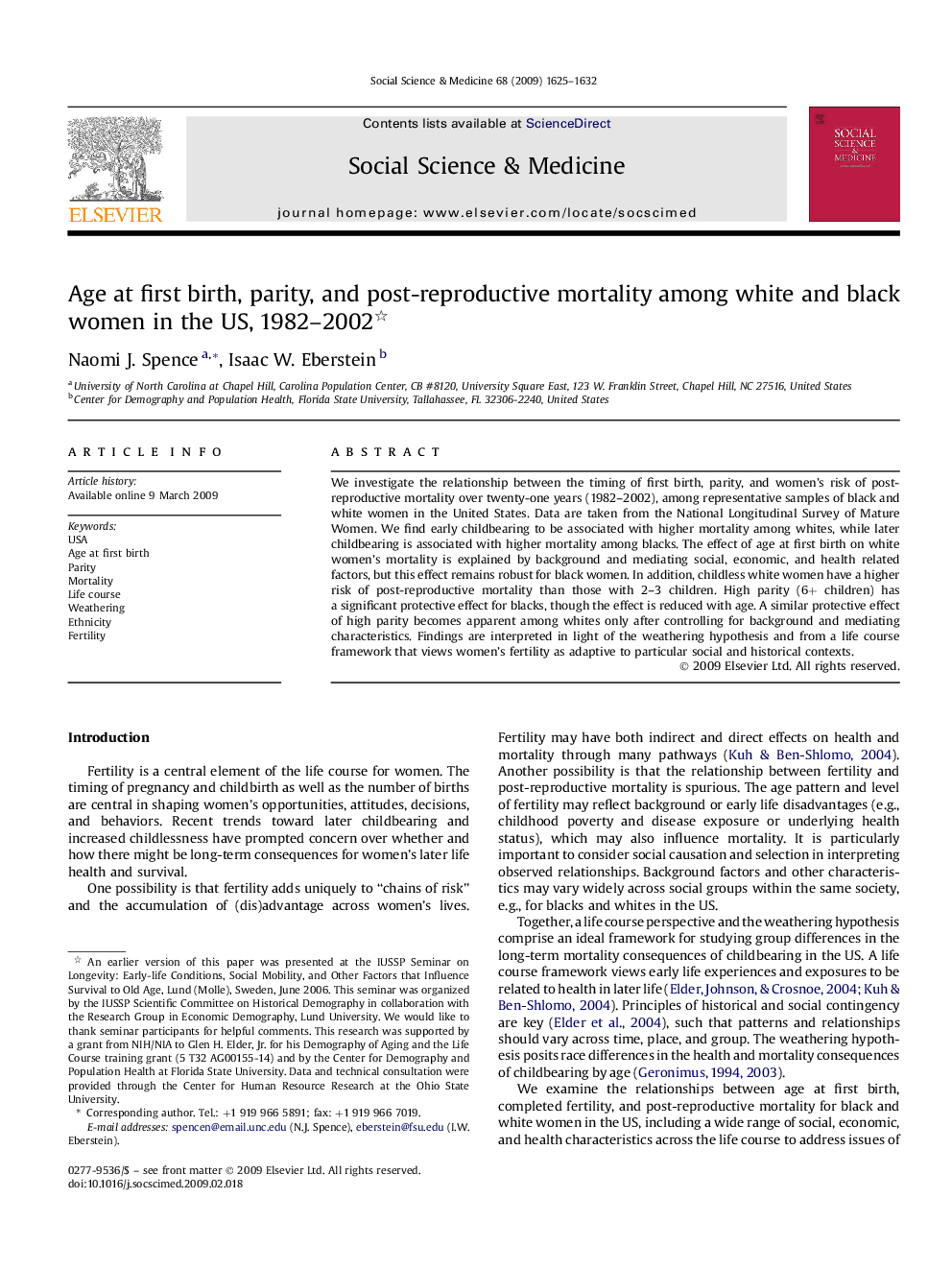| Article ID | Journal | Published Year | Pages | File Type |
|---|---|---|---|---|
| 10472093 | Social Science & Medicine | 2009 | 8 Pages |
Abstract
We investigate the relationship between the timing of first birth, parity, and women's risk of post-reproductive mortality over twenty-one years (1982-2002), among representative samples of black and white women in the United States. Data are taken from the National Longitudinal Survey of Mature Women. We find early childbearing to be associated with higher mortality among whites, while later childbearing is associated with higher mortality among blacks. The effect of age at first birth on white women's mortality is explained by background and mediating social, economic, and health related factors, but this effect remains robust for black women. In addition, childless white women have a higher risk of post-reproductive mortality than those with 2-3 children. High parity (6+ children) has a significant protective effect for blacks, though the effect is reduced with age. A similar protective effect of high parity becomes apparent among whites only after controlling for background and mediating characteristics. Findings are interpreted in light of the weathering hypothesis and from a life course framework that views women's fertility as adaptive to particular social and historical contexts.
Related Topics
Health Sciences
Medicine and Dentistry
Public Health and Health Policy
Authors
Naomi J. Spence, Isaac W. Eberstein,
